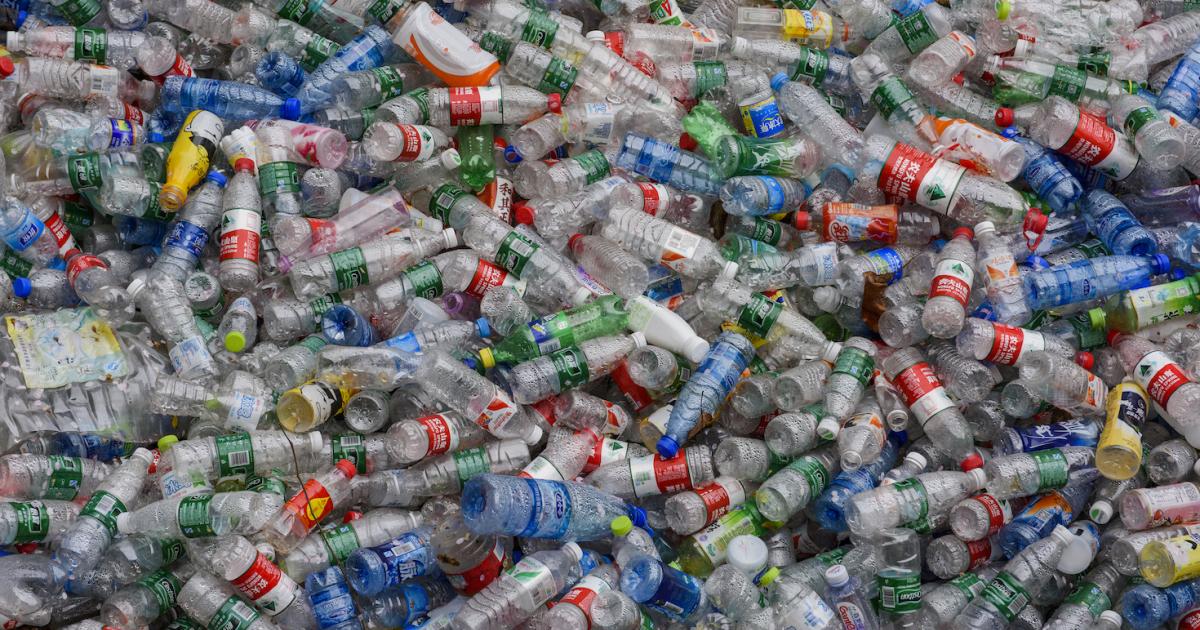
In the Sunnylands Statement, a joint statement on climate from the United States and China released Nov. 14, both countries declared their determination “to end plastic pollution.” A major barrier to achieving that outcome, however, is under construction in China’s Guangdong Province.
The world’s largest plastic producer is partnering with ExxonMobil on a multibillion dollar petrochemical complex in Huizhou to meet the growing demand for polymer-based products in the automotive, agricultural and consumer industries. The project is reported to cost a total of $10 billion and is slated to be up and running by 2025.
According to Exxon’s press release, the industrial park will include a steam cracker — a large furnace that “cracks” petrochemical inputs into gas — with a capacity of 1.6 million metric tons per year. Worldwide, steam crackers generate around 260 million tons of emissions each year — the equivalent of driving over 57 million gasoline-powered vehicles in one year.
The new plant embodies the challenges of backing up international agreements with tangible on-the-ground action in a global economy still based largely on fossil fuels and petrochemicals. And it shows the long road ahead for U.S. oil majors such as ExxonMobil, which last year stated its “ambition to achieve net zero greenhouse gas emissions for operated assets by 2050.”
The lifespan of a typical petrochemical plant like the Huizhou facility is measured in decades; according to a report from EarthJustice, released in August, the U.S. oil and gas industry “is planning a massive build-out of petrochemical plants.”
ExxonMobil did not respond to GreenBiz’s request to comment for this article.
80 million tons a year
In 2019, the lifecycle emissions of global plastic production reached 1.8 billion tons of carbon dioxide equivalents, or the equivalent of consuming over 4 billion barrels of oil. Data shows that over 90 percent of emissions related to plastic production come from the initial conversion of fossil fuels into plastics — the process carried out at the Huizhou plant. And annually, plastics production contributes about 3.3 percent of global emissions.
The new plant embodies the challenges of backing up international agreements with tangible on-the-ground action.
A 2019 OECD report calculated that China recycled only 13 percent of its plastic waste, with the remaining 87 percent ending up incinerated, buried in landfills or discarded as litter. In 2021, China produced around 80 million tons of plastic. China’s decision to prioritize production is overwhelming the country’s efforts to effectively enact plastics-related policy.
A 2022 report by Kathinka Furst of the Norwegian Institute for Water research and Yidi Feng of the Shan Shui Conservation Center in Beijing found that of China’s 231 plastics-related policies, none addresses “the production of plastic products and the involvement of … chemical companies in such processes.”
Alternative pathways are under exploration, but they are nascent. California-based startup Twelve makes products typically made of plastic, such as sunglasses and auto parts, made of carbon-based materials. Twelve’s technology is similar to a steam cracker, but uses CO2 and water instead of petroleum-based products. The CO2 can be derived from any source, including direct air capture systems, and Twelve’s manufacturing plant is powered by renewable energy.
Other climate tech companies converting captured carbon dioxide into replacements for petrochemicals include Belgium-based D-CRBN and New York-based Aircela.
- SEO Powered Content & PR Distribution. Get Amplified Today.
- PlatoData.Network Vertical Generative Ai. Empower Yourself. Access Here.
- PlatoAiStream. Web3 Intelligence. Knowledge Amplified. Access Here.
- PlatoESG. Carbon, CleanTech, Energy, Environment, Solar, Waste Management. Access Here.
- PlatoHealth. Biotech and Clinical Trials Intelligence. Access Here.
- Source: https://www.greenbiz.com/article/exxonmobils-10-billion-plan-boost-plastics-production-china
- :is
- :not
- $UP
- 1
- 13
- 14
- 2019
- 2021
- 2022
- 2025
- 2050
- 8
- 80
- 87
- 90
- a
- About
- According
- achieving
- Action
- addresses
- agreements
- Agricultural
- ahead
- AIR
- ambition
- and
- Annually
- any
- ARE
- around
- article
- AS
- Assets
- At
- AUGUST
- auto
- automotive
- backing
- barrels
- barrier
- based
- BE
- Beijing
- Billion
- Bloomberg
- boost
- both
- but
- by
- calculated
- CAN
- Capacity
- capture
- captured
- carbon
- carbon dioxide
- carried
- Center
- challenges
- chemical
- China
- Chinas
- Climate
- co2
- come
- comment
- Companies
- CONSERVATION
- construction
- consumer
- contributes
- Conversion
- converting
- countries
- country’s
- data
- decades
- decision
- Demand
- Derived
- determination
- DID
- direct
- Dollar
- driving
- each
- economy
- effectively
- efforts
- embodies
- Emissions
- end
- ending
- energy
- EPA
- Equivalent
- equivalents
- Ether (ETH)
- exploration
- exxonmobil
- Facility
- For
- fossil
- fossil fuels
- found
- from
- fuels
- GAS
- generate
- Global
- Global economy
- greenhouse gas
- Growing
- Guangdong
- However
- HTTPS
- in
- include
- Including
- industrial
- industries
- industry
- initial
- inputs
- instead
- Institute
- International
- into
- involvement
- IT
- ITS
- joint
- jpg
- large
- largely
- largest
- Last
- Last Year
- lifespan
- like
- Long
- made
- major
- Majors
- MAKES
- manufacturing
- massive
- measured
- Meet
- metric
- million
- nascent
- New
- New York-Based
- None
- Norwegian
- nov
- OECD
- of
- Oil
- Oil and Gas
- on
- ONE
- only
- operated
- or
- out
- Outcome
- over
- overwhelming
- Park
- partnering
- parts
- pathways
- per
- percent
- plan
- plant
- plants
- plastic
- plastics
- plato
- Plato Data Intelligence
- PlatoData
- policies
- policy
- Pollution
- powered
- press
- Press Release
- Prioritize
- process
- processes
- Produced
- Production
- Products
- project
- reached
- recycled
- related
- release
- released
- remaining
- Renewable
- renewable energy
- report
- Reported
- request
- research
- Respond
- road
- running
- s
- Shows
- similar
- Source
- startup
- stated
- Statement
- States
- Steam
- Still
- such
- Systems
- tangible
- tech
- tech companies
- Technology
- that
- The
- their
- they
- this
- to
- tons
- Total
- typical
- typically
- u.s.
- under
- United
- United States
- uses
- Vehicles
- Water
- which
- will
- with
- world’s
- worldwide
- year
- zephyrnet
- zero








